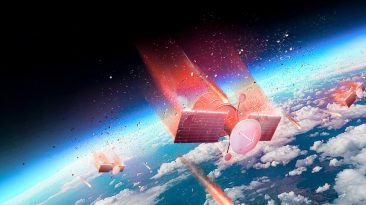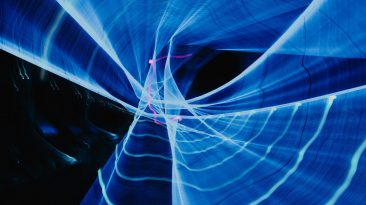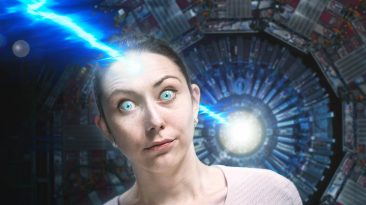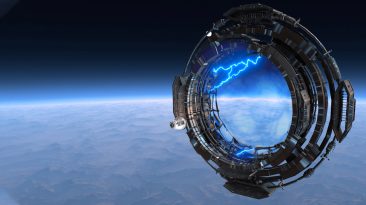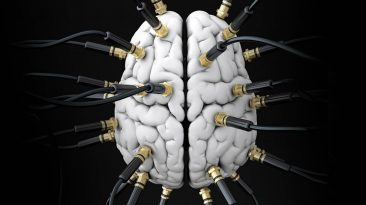You’re in the Ghostbusters universe. With a quick stomp, demons are as good as gone. So how would life change if you could bust ghosts in real life? Would you need to reinvent nuclear power? Or just a whole lot of money? And could you get slimed?
In the new movie, Ghostbusters: Afterlife, a spooky tradition gets passed on to the next generation. This family’s been using science to catch ghosts since the 1980s, but the concept is nothing new. Ghostbusting revolves around electronegativity. That means you’ll be using positively charged atoms to attract negatively charged particles.
You’ll need heavy-duty power for this job. Remember that in the films, they use particle accelerators working at close to the speed of light. But how would you keep this pack from exploding?
In the original Ghostbusters movie, the team wore portable particle accelerators called cyclotrons. These devices used a constant, high-frequency voltage contained by a magnetic field. Now, you would be using something called a synchrotron. This device would use superconducting magnets to create the laser whip needed to lasso a ghost. But what’s inside this pack?
To catch a ghost, you’d need to emit a particle stream of protons along with raw nuclear energy. To do that, you would have to use liquid helium cooling systems to keep the superconductors at about -270 °C (-452 °F). In these films, the spirits consist of psychokinetic energy. And their energy has a negative charge.
So when this positively charged beam shoots out, these floating nightmares can be dragged into a positively charged laser grid. We’ll talk about that trap later. Right now, let’s focus on catching that ghost without getting slimed. When that hungry ghost hit actor Bill Murray, it left behind a mess of slime that the movie called ectoplasm.
In the real world, ectoplasm doesn’t exist. But in the Ghostbusters’ universe, ectoplasm has a negative charge, which the proton stream could trap. Just keep your distance. Oh, it won’t come off my hand. Some amateur engineers have designed cyclotrons only 8 cm (3 in) in diameter, but that wouldn’t be enough for you to bust a ghost.
Maybe you could use the energy produced by the Large Hadron Collider, one of the most powerful particle accelerators ever made. Much larger than an angry marshmallow man, this monster is three times the size of Mount Everest. The particle accelerator’s ring stretches almost 27 km (16.7 mi) underground, and superconducting magnets line the inside.
This scientific achievement cost billions of dollars. But that one on your back, well, that will run you around $125,000. Not bad. Now, let’s talk about what you’re wearing. This jumpsuit might be classic, but it wouldn’t save you from the scorching hot radioactive beam. Without proper protection, the radiation from that laser could damage your DNA, and you might develop cancer in the long term.
Right now, get out of the way.This beam could instantly rip apart the atoms of anything in its path. And if you crossed two of these streams, it could lead to every molecule exploding at the speed of light. Or, in Ray’s words, “total protonic reversal”. Watch where you’re pointing that.
Once that trap door opens, look away. The positively charged radiation your pack emitted would bring out nanoparticles called muons. These dense, negatively charged atoms would weigh down the ghost as the trap’s positive charge would draw them inside. And if the radiation hasn’t killed you yet, close that door.
With careful precautions, you might have what it takes to go head-to-uh, skull, with the undead. So now that you mastered superconducting magnets, maybe you’re ready to take on a different movie franchise. What if you built a lightsaber?
Sources
- “Proton Pack”. 2021. ghostbusters.fandom.com.
- “The Science Of The Ghostbuster’s Upgraded Proton Pack – Science Vs Hollywood”. David Latchman. 2016. sciencevshollywood.com.
- “Synchrotron | What Is Synchrotron Light? | ANSTO”. 2021. ansto.gov.au.
- “Ghostbusters Proton Pack ! This Is A Guide On How To Operate, Its Features And The Science ….. “. 2021. sandstoneproductions.co.uk.
- “The Do-It-Yourself Cyclotron”. 2021. symmetrymagazine.org.













